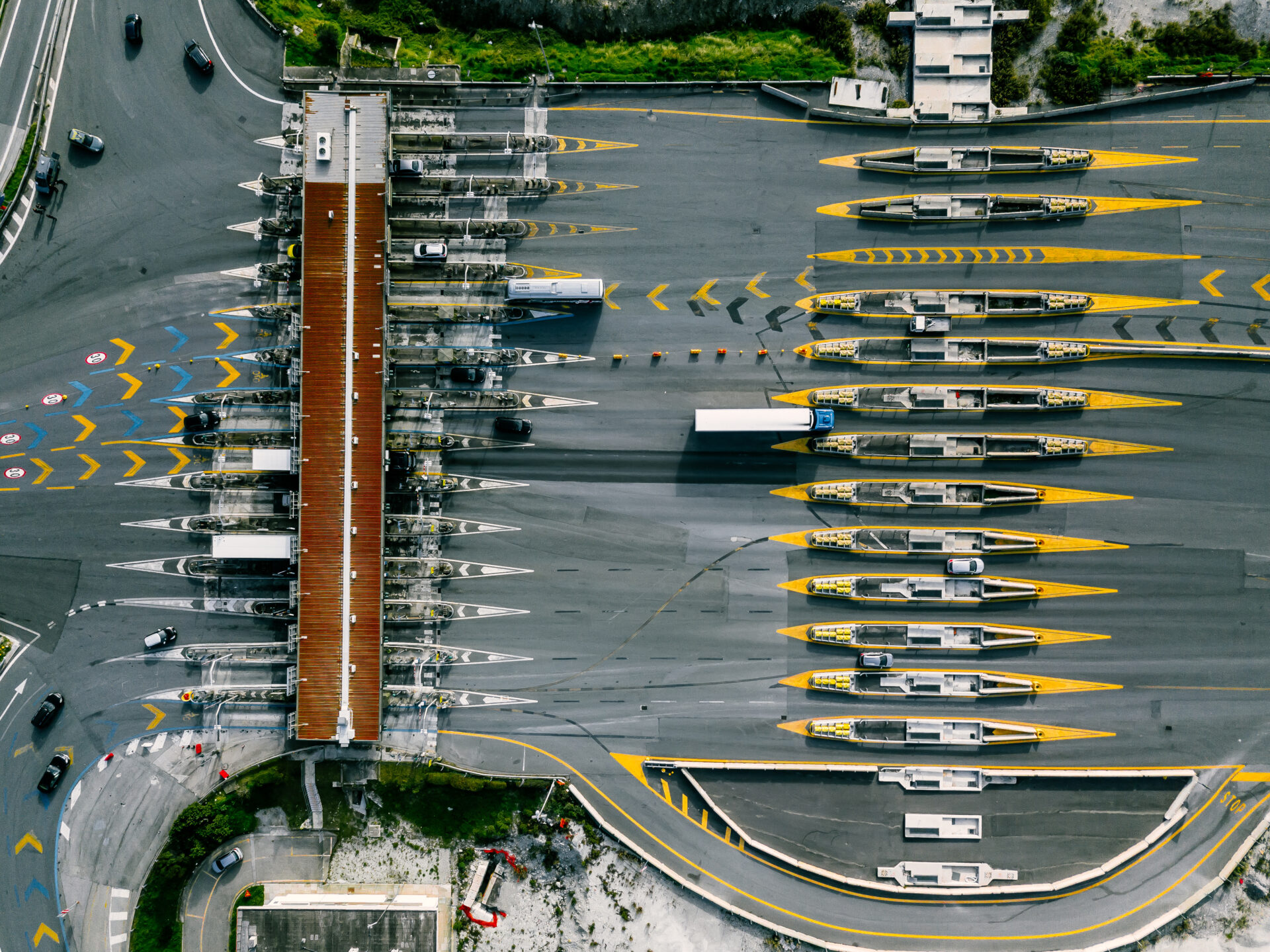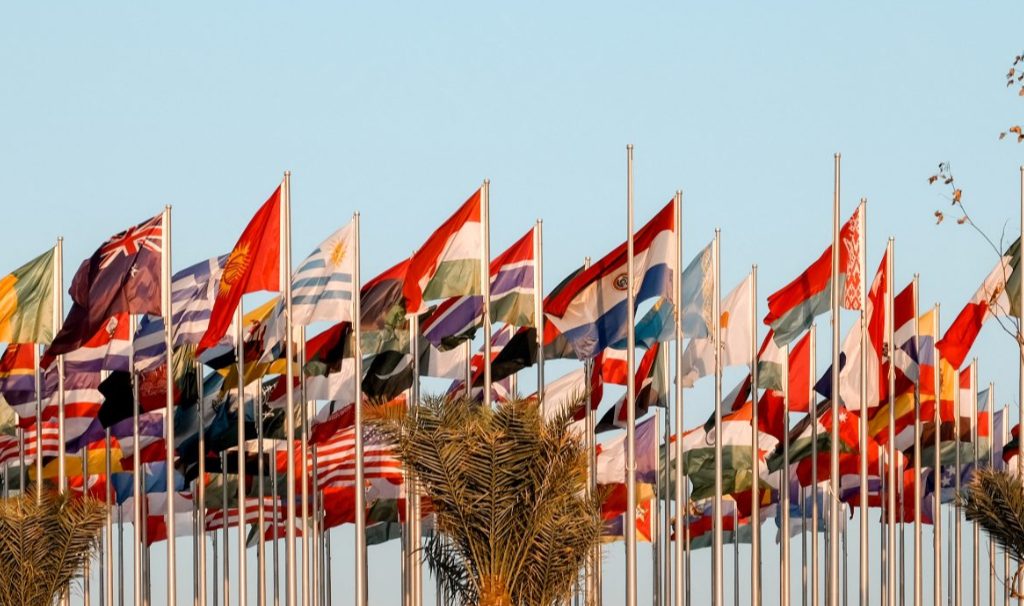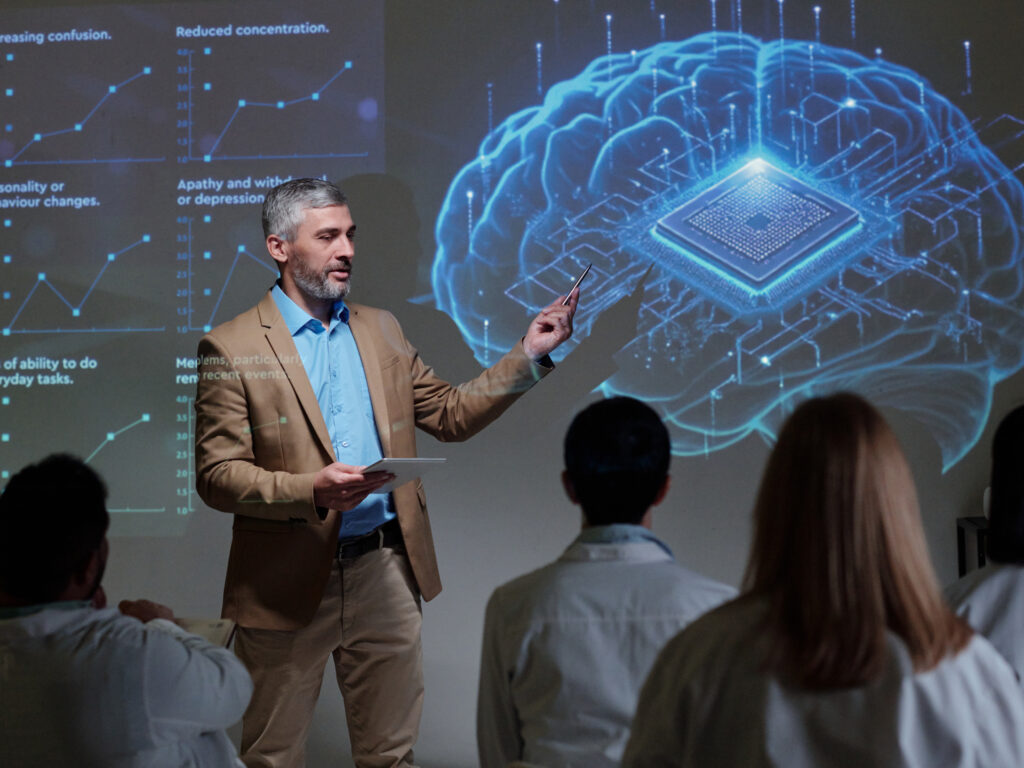
The Digital Frontier
As global connectivity and mobility expand, border security confronts increasingly complex and dynamic challenges. Traditional physical boundaries, now more permeable than ever, demand the adoption of innovative digital strategies that enhance security, improve operational efficiency, and uphold human dignity.
Shifting from static defenses to agile, data-driven approaches allows for the dynamic anticipation and neutralization of risks. The integration of advanced technologies such as biometrics, artificial intelligence, and blockchain into border security frameworks marks a significant paradigm shift. It empowers nations not just to react but to stay ahead of emerging threats, reshaping the landscape of national and international security.
These pioneering digital strategies are revolutionizing border security, establishing new standards in protection and facilitation, and aligning with broader goals of ensuring safety and freedom in our interconnected world.
1. Frictionless Border Experiences: Human-Centric Technology at Work
The evolution of border security technologies has shifted towards creating more intuitive, seamless experiences for travelers, underpinned by robust, discreet security measures. This shift is underpinned by a suite of advanced digital solutions that streamline processes and improve user interactions, fundamentally transforming the nature of border crossings. Key technology solutions include:
- Facial Recognition and Biometric Pre-Clearance: Systems like facial recognition not only offer high accuracy but also enhance user convenience. For instance, Eurostar has implemented biometric pre-clearance where travelers can verify their identities via an app before arrival, streamlining the travel process and reducing wait times at checkpoints. Similarly, Singapore Changi Airport is advancing this technology by becoming the first international hub to implement a completely passport-free entry system by end of 2024. Here, facial recognition technology will verify identities without the need for physical passports, significantly enhancing the efficiency of border controls and minimizing physical contact for a smoother travel experience.
- Integrated AI and Real-Time Data Systems: Artificial intelligence plays a pivotal role in revolutionizing border security by integrating with real-time data systems, such as visitor management platforms. Companies like Travizory utilize AI to analyze extensive traveler data swiftly, providing actionable insights to border officials even before a traveler arrives. This proactive approach significantly bolsters the capability to preempt and mitigate potential threats.
- Digital Identity and Credential Management: Digital Travel Credentials (DTCs) represent a major shift towards digitizing personal identification documents. These credentials, stored securely on a traveler’s mobile device, can be seamlessly presented, and verified through encrypted communication at checkpoints. This digitization not only speeds up the verification process but also adds a layer of security by minimizing physical document handling and potential fraud. Blockchain technology is increasingly employed to secure digital identities, ensuring data integrity and preventing unauthorized access. This technology provides a robust framework for digital IDs, making them both secure and easily verifiable at various checkpoints.
- Seamless Integration Across Border Management Systems: The effectiveness of border controls is significantly enhanced by integrating immigration, customs, and security data systems. This comprehensive integration provides a unified view of each traveler, allowing for coordinated and efficient assessments and responses at every touchpoint. Such integration supports a streamlined operation, reducing redundancies and potential security gaps, thus fostering a safer and smoother crossing experience.
2. Data Utilization and Cybersecurity: Securing the Invisible Frontiers
In the digital landscape of border security, the strategic use of data combined with robust cybersecurity measures is essential for ensuring a safe and seamless travel experience. Border agencies manage large volumes of sensitive information, making the integration of advanced data analytics and comprehensive cybersecurity protocols crucial.
- Advanced Predictive Analytics and Machine Learning: By employing machine learning models, border security can enhance traditional data analysis to anticipate potential threats from complex behavioral patterns and historical data. These models process a broad array of unstructured data, such as travel histories and online activities, enabling agencies to identify and mitigate risks proactively. For example, predictive analytics can detect atypical travel patterns that may indicate security threats or criminal activities.
- Adaptive Real-Time Threat Detection Systems: AI-driven systems that learn from each interaction help border agencies improve real-time threat detection and response. These systems integrate live data feeds, including CCTV footage and biometric verification points, with global databases. This integration forms a dynamic security posture that adapts to current threat levels, enhancing the accuracy of threat assessments and ensuring a responsive border control operation.
- Multi-Layered Cybersecurity Frameworks: To safeguard sensitive data against increasingly sophisticated cyber threats, border agencies employ multi-layered cybersecurity frameworks. This involves the use of advanced encryption, intrusion detection systems, and blockchain technology to ensure data integrity and prevent unauthorized access. For example, blockchain can be used to create tamper-proof logs of traveler data, ensuring that once information is verified, it cannot be altered without detection.
- International Collaboration on Cybersecurity Protocols: Given the global nature of travel, border security is not just a national issue but an international one. Collaborating on cybersecurity protocols and data protection standards helps create a unified front against cyber threats. This includes shared real-time threat intelligence platforms among countries, which enhance the collective ability to respond to cyber incidents and protect sensitive traveler information across borders.
- Ethical AI and Data Privacy Regulations: Ensuring that the use of AI and data analytics in border security complies with ethical standards and privacy regulations is crucial. This involves transparent data handling procedures, robust consent mechanisms, and continuous monitoring to align with ethical AI practices and international privacy laws like GDPR. By prioritizing ethical considerations, border agencies can maintain public trust and support for advanced data-driven technologies.
These strategies represent a sophisticated blend of technology and policy, ensuring that border security agencies not only keep pace with global movements and threats but also respect the rights and privacy of individuals. This approach underscores a forward-thinking perspective that is crucial for developing resilient, future-proof border security systems.
3. Virtual Realities: Beyond Physical Borders
The integration of virtual and augmented reality (VR and AR) technologies into border security is transforming not only operational processes but also broadening the conceptual framework of what constitutes border management. These technologies provide innovative solutions to enhance surveillance, training, and interaction with travelers, making border security operations more efficient and less intrusive.
- Enhanced Surveillance and Virtual Tours: Virtual reality (VR) technology is now being used to create detailed virtual tours of border facilities. This allows officials to explore and understand the layout and surveillance systems without actually being there. Such virtual tours are vital for effectively planning and improving border security. For instance, the U.S. Border Patrol uses VR to record and review their surveillance techniques, giving them a clearer view of how well their security measures cover the border areas.
- Training and Operational Planning with AR: Augmented reality is revolutionizing training and operational planning in border security. The use of AR for real-time data overlay allows border agents to access crucial information about travelers and goods as they monitor border crossings. This technology is also used in training scenarios, where agents can simulate various border crossing situations to gain hands-on experience in a controlled, virtual setting.
- Remote Command Centers: Virtual reality is facilitating the creation of virtual command centers that can operate remotely, allowing for the decentralization of monitoring and decision-making processes. This not only increases the flexibility and scope of border security operations but also enhances the ability to respond swiftly to incidents as they occur. U.S. Customs and Border Protection, for instance, has utilized VR to plan and visualize new command centers, which assists in making more informed decisions on resource deployment.
- Inter-Agency Collaboration and Training: Collaborative efforts are being enhanced through VR and AR by enabling multiple agencies to engage in joint training sessions and planning exercises without the need for physical presence. This fosters a more integrated approach to border security, enhancing the collective capability to tackle challenges. Technologies like the Augmented Reality Sandtable (ARES) are examples of how AR is used to increase situational awareness and facilitate joint operations planning.
- Predictive and Adaptive Security Measures: The integration of VR and AR in border security is moving towards more predictive and adaptive measures. By simulating various scenarios, these technologies allow border agencies to anticipate and prepare for potential threats before they manifest at physical borders. This forward-looking approach is crucial for developing proactive border security strategies that can adapt to changing dynamics and threats.
The use of VR and AR in border security not only enhances the capabilities of border agencies but also aligns with modern expectations for efficient, innovative, and less intrusive security measures. As these technologies continue to evolve, they will play a pivotal role in shaping the future landscape of border security.
4. Envisioning the Future of Border Control
As we look ahead, border security is poised for a radical transformation, driven by rapid technological advancements and evolving global needs. The future of border control will likely be shaped by a combination of predictive technologies, enhanced biometrics, and a new paradigm of international collaboration and ethical governance. Here’s how these elements are envisioned to develop in the coming years:
- Predictive Security and AI Integration: Border security will increasingly rely on artificial intelligence and machine learning to predict and preempt potential threats. Advanced analytics will allow for real-time threat assessment and adaptive responses, significantly reducing the need for physical interventions and enhancing the efficiency of border controls.
- Advanced Biometrics and Autonomous Systems: There will be a greater reliance on sophisticated biometric systems, including facial, iris, and gait recognition, integrated with autonomous border control systems. These technologies will provide seamless and almost invisible security checks, allowing for a much faster and hassle-free crossing experience for travelers.
- Global Data-Sharing Initiatives: The globalization of security will necessitate unprecedented levels of data sharing and cooperation among countries. Shared international databases and real-time data exchange will become the backbone of global security frameworks, enabling more effective tracking and management of migration and travel flows.
- Ethical Frameworks and Privacy Protections: As the capabilities of border security technologies expand, so will the ethical implications. Robust frameworks for the ethical use of technology will be crucial. These frameworks will need to ensure that technological advancements do not impinge on individual privacy or human rights, maintaining a balance between security and personal freedoms.
- Virtual Borders and Decentralized Management: The concept of physical borders may diminish as virtual and remote processing becomes the norm. Travelers might undergo most of the border control processes digitally, from the comfort of their homes or via automated kiosks at transit points, which will use real-time data and predictive analytics to streamline the clearance process.
This vision for the future of border control paints a picture of a world where border security is not just about managing territorial boundaries but about intelligently integrating technology to create more secure, efficient, and humane systems.
The challenge will be to harness these technologies responsibly, ensuring they are used to enhance global security while respecting the rights and dignities of individuals. As we advance, continuous innovation, international cooperation, and ethical vigilance will be paramount to achieving these goals.
References:
- DXC Technology (2024)
- Department of Homeland Security (2024)
- Travizory (2024)
- International Society for Presence Research (2024)
- Eurostar Media Centre (2023)
- Condé Nast Traveler (2023)
- U.S. Customs and Border Protection (2022)
- Future Business Tech (2022)
- Frontex (2020)
- Frontex (2020)
- WCO News (2020)
- SecuriPort (2019)
- Department of Homeland Security (2019)
- Government Technology (2018)
- Civil Service World (2018)




